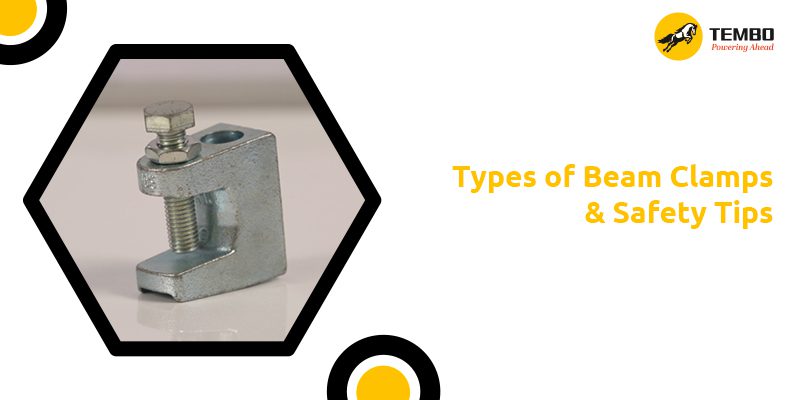Beam clamps are known for providing adequate support and portable means of attaching a hoist to a lifting beam or runway. They are crucial to the industrial sector as they offer proper support and better load control. There are 3 types of beam clamps available on the market. Let’s take a look at all 3 types-
Scissor Type Beam Clamps
One of the basic clamp types, the scissor beam clamp is considered ideal for the majority of lifting applications. Since it used a scissor action to manipulate the weight of the load and apply clamping load, it is called a scissor-type beam clamp. The clamping jaws of this beam clamp are quite rough and hence enable them to form a better grip.
Before you put it into use, make sure to check its condition and inspect the pivot bolt and watch for any sort of wear and tear. You must also check the SWL, identification, and the beam it can be used with.
Adjustable Type Beam Clamps (With Fixed Jaw)
Screw thread, screw spigot, and tommy bar must be checked thoroughly. SWL and identification must also be checked properly before it is put to use.
Adjustable Type Beam Clamps (With Swivel Jaw)
With swivel jaw beam clamps, the swivel jaws must be able to move freely. Like all other beam clamps, the SWL, identification, screw spigot, screw thread, and tommy bar must also be checked along with its general condition.
Here’s a list of pre-inspection tips you must follow to avoid any occupational hazards
- Always check that the beam clamp is of the perfect size for the beam. Choosing the wrong sized clamp or structural beam clamp will only lead to problems.
- Inspect the clamp properly for any sort of wear, deterioration, or damage. Shackle and hinge attachment points must be checked thoroughly for this.
- Examine the Tommy handle for damage and distortion.
- Always check SWL and identification as well as colour code. Never exceed the advised SWL of beam clamp.
- Screw spigots must not be damaged or worn out.
- Never try to replace bolts without consulting the supplier. The fitting of a wrong screw can cause damage to the beam clamp.
Hope you found the information and tips provided above useful. If you have any questions about these clamps or even how to use saddle clamps or how to buy them, drop us a line and we will be more than happy to assist you.








